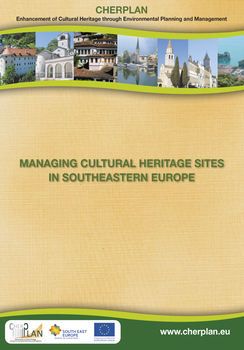Managing Cultural Heritage Sites in Southeastern Europe
Knjiga Upravljanje območij s kulturno dediščino v Jugovzhodni Evropi, kot eden od rezultatov projekta CHERPLAN, naslavlja ključna vprašanja upravljanja območij s kulturno dediščino. Predstavlja osnovni okvir, ki sta ga na tem področju izoblikovala Unesco in ICOMOS, ter usmeritve za dvajset različnih izzivov upravljanja, kjer vsakega pospremimo z uvodom, priporočili in primeri dobrih praks. Knjiga tako zagotavlja praktične informacije za uveljavljanje okoljskega planiranja na območjih s kulturno dediščino v Jugovzhodni Evropi, pri čemer je bil del priporočil pripravljen znotraj pilotnih območij, del pa smo jih prevzeli od drugje. V obeh primerih predstavljajo priporočila in dobre prakse preverjena lokalna znanja, saj so jih v opisanih primerih uspešno uporabili.
Prenosi

Zbirka
Licenca

To delo je licencirano pod Creative Commons Priznanje avtorstva-Nekomercialno-Brez predelav 4.0 mednarodno licenco.
